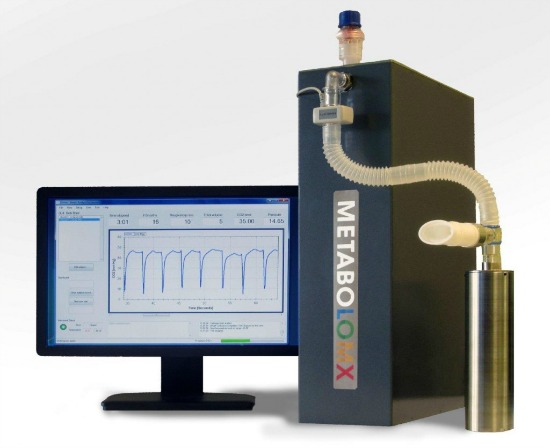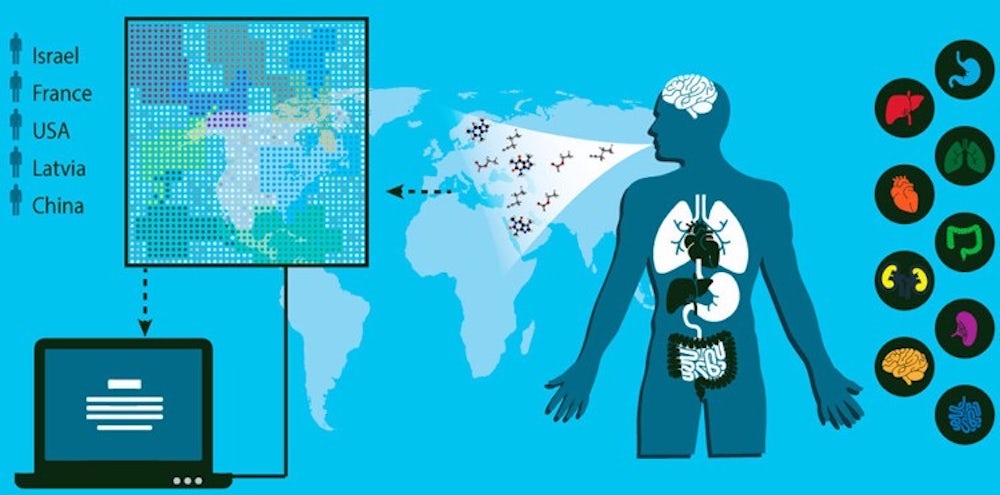The Scent of Disease
"You're seeing a convergence of technology now, so we can actually run large-scale clinical studies to get the data to prove odour analysis has real utility."
"You can program what you want to sniff out just by changing the software. We can use the device for our own trials on colorectal cancer, but it can also be used by our partners to look for other things, like irritable bowel disease."
Billy Boyle, co-founder, president of operations, Owlstone, Cambridge, England
"My college roommate had leukemia, and it made me want to see whether a sensor could be used for treatment."
"But then I realized early diagnosis could be as important as treatment itself."
"We have a mixture of compounds which characterize a given disease and this picture is different from one disease to another."
"Current cancer diagnosis techniques are ineffective and impractical. [NaNose technology] could facilitate faster therapeutic intervention, replacing expensive and time-consuming clinical follow-up that would eventually lead to the same intervention."
Hossam Haick, professor, Technion-Israel Institute of Technology, Haifa
"I think the fact that you're seeing so much activity both in commercial and academic settings shows that we're getting a lot closer [to perfecting diagnostic tools for use by medical clinicians]."
Cristina Davis, biomedical engineer, professor, University of California, Davis
In December of last year a study was published in the journal American Chemical Nanosociety that appeared to reach a consensus among scientists working to create reliable breathalyzer sensors that would have the capability of detecting the presence of many different types of diseases, by testing, or 'smelling' the breath of individuals.
Its conclusion was based on the outcomes of breath samples collected between 2011 to 2014 from 1,404 people. Scientists from Israel, the United States, Latvia, China and France were involved in this project with test subjects known to be healthy, or alternately to be suffering from one of 17 different diseases; eight types of cancer, Crohn's disease, irritable bowel syndrome, and multiple sclerosis. Artificially intelligent nanoarrays (minuscule sensor points able to identify at the molecular level) comprised the working element of the sensors.
Thirteen distinct chemical types called volatile organic compounds associated with certain disease types were identified by the study. When the particles in test subjects' breath were exhaled they were identified, characterized and then associated with a particular disease. That identification by way of the nanosensor went on to be confirmed through other identification methods to ensure that the breathalyzer disease connections were correct, much as a second opinion is often called upon with a diagnosis of a condition and its resulting therapy.
The unique 'odourprint' comprised of thousands of organic compounds represents how each of us smells. The molecules are capable of revealing age, genetics, lifestyle, even metabolic processes underlying health status. Medical practitioners in ancient Greece and China were familiar with a very similar technique, without the aid of technology, by training their sense of smell to detect scents they would connect with ailments to produce a diagnosis. And so too does modern medical research validate that smell of skin, breath and body fluids can reveal the presence of an illness.
Some health professionals may have an acute or trainable olfactory skill, and others may not, so it makes sense that in an age when advances in technology simplify so many things, advancing our knowledge, that it be used to produce a diagnostic tool utilizing a programmed detection system to recognize illness in the molecules of an individual's breath analysis. The goal is now as it has been for many years, to produce a design for an inexpensive odour sensor, reliable in producing quick non-invasive diagnoses.

A machine that sniffs out cancer. Photo courtesy of Metabolomx
The molecules in a breath-odour sample are ionized -- charged -- and then an electric current used to move the chemicals of diagnostic interest through the channels in the chip where they are then detected. In conjunction with the University of Warwick, Owlstone is conducting a 1,400-subject trial to test urine samples for the presence of colon cancer. Israel's Hossam Haick is developing a quite similar diagnostic tool, using an array of sensors made of gold nanoparticles or carbon nanotubes.
With the use of artificial intelligence diagnosing the nanotubes coated with molecular receptors with an affinity for biomarkers of disease detected in exhaled breath, the machine improves its capacity to diagnose with each repeated exposure. The overall chemical combination that produces a specific odour is how Professor Haick's machine is primed to diagnose. The December paper published in ACS Nano demonstrated that Dr. Haick's artificially intelligent nanoarray was capable of distinguishing those 17 diseases with an accuracy rate of 80 percent.
 A patient uses the NaNose breathalyzer (Photo credit: Courtesy Technion)
A patient uses the NaNose breathalyzer (Photo credit: Courtesy Technion)Labels: Biochemistry, Disease, Health, Technology



0 Comments:
Post a Comment
<< Home